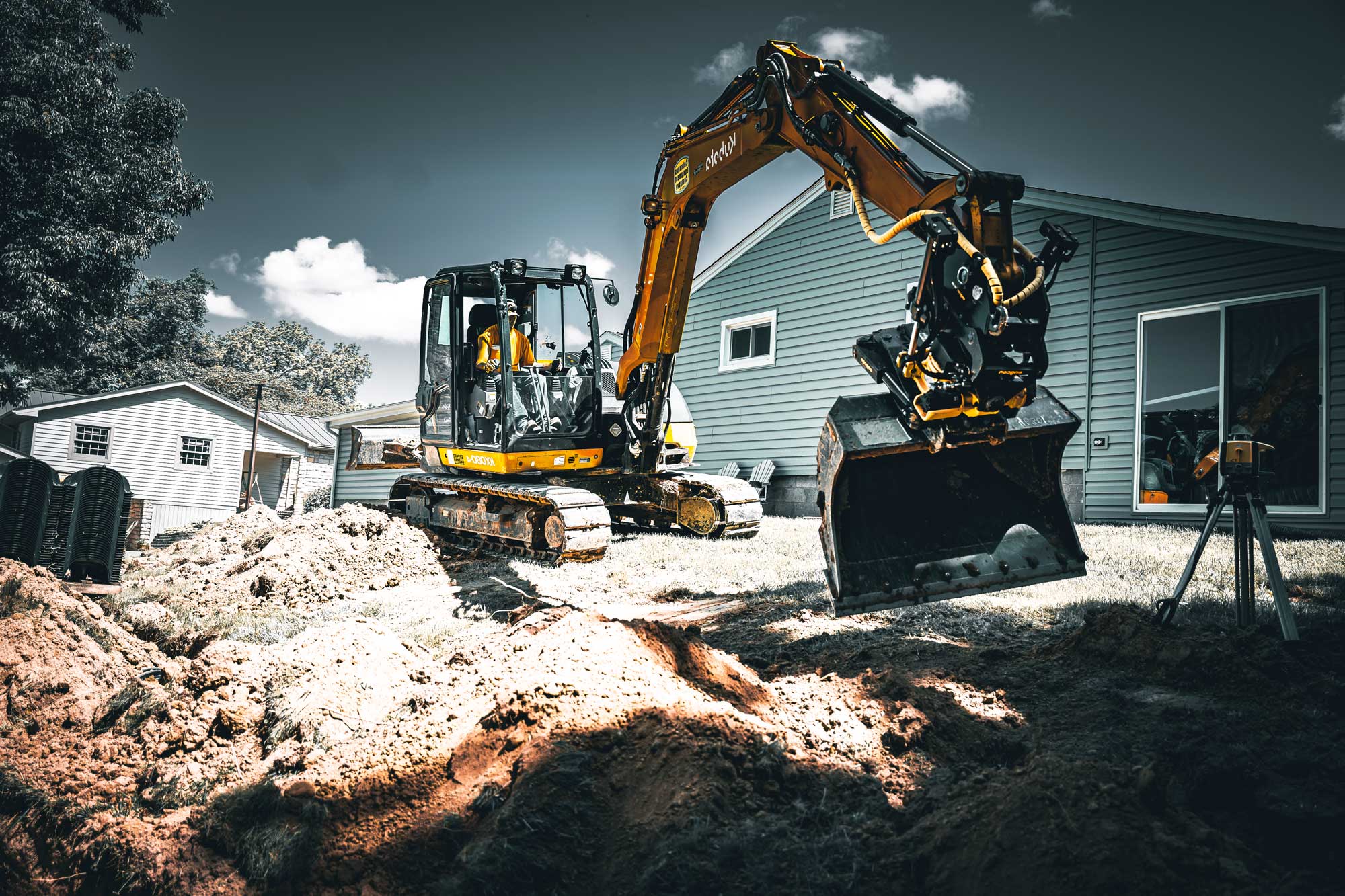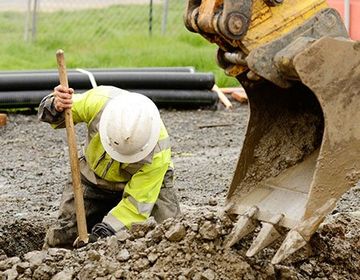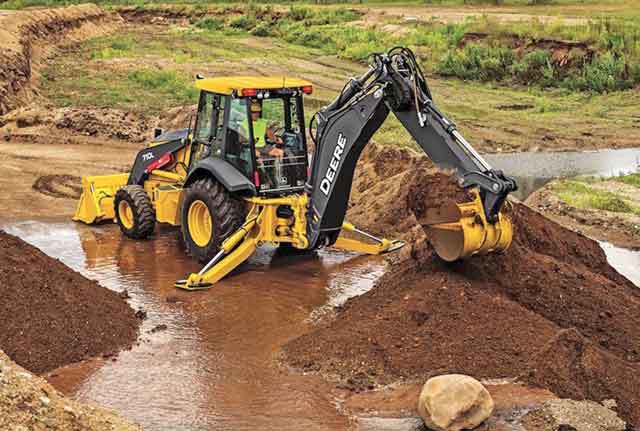Septic Ohio - Comprehensive Septic Tank Providers in Ohio
Septic Ohio - Comprehensive Septic Tank Providers in Ohio
Blog Article
Unveiling the Art of Excavation: Pro Tips for Safe and Productive Digging
As soil is transformed and earth is relocated, the intricacies of excavation expose themselves, demanding an eager understanding of equipment, soil make-up, safety methods, and environmental considerations. The expertise required to browse these elements properly can indicate the distinction in between a successful excavation task and a potential catastrophe.
Relevance of Proper Equipment
To make sure the safety and security and efficiency of any type of excavation job, making use of the suitable devices is extremely important. The right tools not only boost productivity but likewise minimize risks associated with digging. Excavation tasks differ in scope and intricacy, varying from tiny domestic landscaping work to massive construction endeavors. No matter of the project dimension, having the correct devices can make a substantial distinction in the end result.
Excavators are essential items of machinery in any kind of digging operation. These versatile devices can be found in various dimensions to match various job demands. Small excavators are optimal for smaller tasks, while larger excavators tackle a lot more extensive tasks efficiently. Backhoes are an additional crucial tools kind, integrating the functions of a loader and an excavator in one machine. They are valuable for jobs needing versatility and ability to move.
In addition to excavators, various other essential equipment consists of dump trucks, plates, and bulldozers. Dump vehicles are essential for eliminating and delivering excavated materials, while trenchers are used for digging deep and slim trenches. Bulldozers excel in tasks that require pushing large amounts of dirt or debris. By investing in the suitable devices, excavation jobs can be finished safely, on schedule, and with accuracy.
Comprehending Soil Make-up
A detailed understanding of soil structure is basic for carrying out excavation tasks with precision and security. Recognizing the different kinds of soil is critical as it directly impacts excavation methods, tools choice, and general task performance. Soil composition commonly includes four primary elements: sand, silt, clay, and organic issue. Each part has special residential or commercial properties that affect just how dirt responds to excavation procedures.
Sand bits are the largest and offer excellent drain yet offer little cohesion. Silt bits are smaller sized than sand yet bigger than clay, using moderate drainage and cohesion. Clay fragments are the smallest and provide high communication yet bad drainage. Organic issue, such as decomposing plant product, impacts dirt fertility and stability.
Before starting excavation, performing dirt tests to determine its composition and characteristics is essential. This details assists in selecting the ideal devices, carrying out precaution, and creating excavation methods tailored to the details soil problems - lancaster excavation. By comprehending soil structure, excavation professionals can improve project results while ensuring security and adherence to best methods
Safety Procedures and Procedures
Comprehending dirt composition is the keystone upon which precaution and procedures for excavation projects are developed, making certain the well-being of employees and the success of the undertaking. There are numerous key steps that should be implemented to reduce dangers and protect against accidents. when it comes to security during excavation.
Firstly, prior to any kind of excavating begins, a detailed examination of the website should be performed to recognize any possible hazards such as underground energies, unpredictable soil conditions, or close-by structures that can posture a risk. It is important to have a competent person oversee the excavation process to ensure that all use this link safety and security procedures are followed purely.
Additionally, all employees involved in the excavation must be properly trained in secure excavating methods and the proper procedure of devices. By adhering to these security steps and procedures, excavation tasks can be finished successfully and without incident.
Reliable Excavation Preparation
When beginning on an excavation project, careful planning is necessary to ensure performance, security, and successful end results. Reliable excavation planning involves numerous essential actions that are vital for the smooth implementation of the job. The first action is to carry out a complete site assessment to recognize any type of potential threats, such as underground energies or unsteady dirt problems. This information over here is essential for establishing a thorough excavation strategy that includes safety steps and take the chance of mitigation approaches.
When the website assessment is total, the following step is to produce a clear timeline and routine for the excavation activities. This consists of determining the sequence of jobs, tools requirements, and workforce appropriation. Proper scheduling assists stay clear of delays and guarantees that the task remains on track.

Furthermore, communication among all team members is vital throughout the preparation stage. Clear regulations, routine updates, and efficient sychronisation are crucial for an effective excavation task. By spending time and initiative in thorough preparation, excavation groups can substantially improve efficiency, lessen dangers, and accomplish successful outcomes.

Taking Care Of Environmental Factors To Consider
With boosting emphasis on ecological sustainability in building practices, taking care of environmental considerations has actually become an essential element of excavation projects. Excavation tasks have the potential to influence the surrounding atmosphere through dirt erosion, debris overflow, environment interruption, and contamination of water resources. To alleviate these risks, it is vital to execute best methods that focus on environmental defense.

Furthermore, proper waste administration is crucial to avoid soil and water contamination. Applying procedures for the disposal of unsafe products, recycling of waste products, and minimizing using hazardous chemicals can significantly minimize the environmental effect of excavation tasks. By incorporating these methods right into excavation planning and execution, building business can ensure that their jobs are not only secure and productive however likewise environmentally accountable.
Verdict
To conclude, grasping the art of excavation calls for an extensive understanding of appropriate equipment, dirt composition, precaution, and effective planning. By complying with these guidelines and taking into consideration ecological variables, excavations can be conducted securely and efficiently. It is essential to focus on safety and productivity in every excavating job to make sure effective outcomes.
As soil is transformed and planet is relocated, the details of excavation disclose themselves, demanding an eager understanding of devices, dirt composition, security procedures, and ecological factors to consider.To ensure the safety and efficiency of any type of excavation project, making use of the suitable tools is paramount.An extensive understanding of soil composition is basic for performing excavation tasks with precision and safety. Understanding the different kinds of dirt is essential as it directly impacts excavation techniques, equipment choice, and overall project effectiveness. By recognizing soil make-up, excavation professionals can improve task end results while making certain safety and adherence to ideal practices.
Report this page